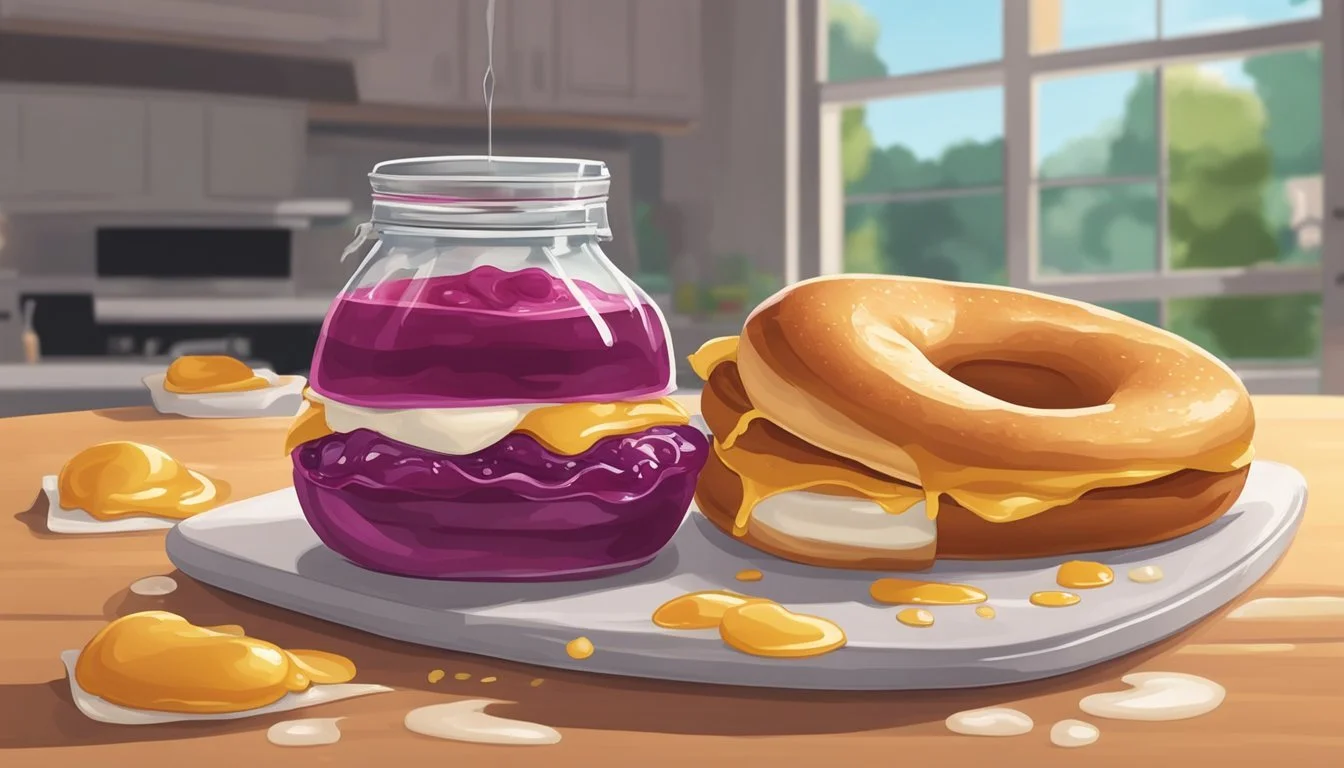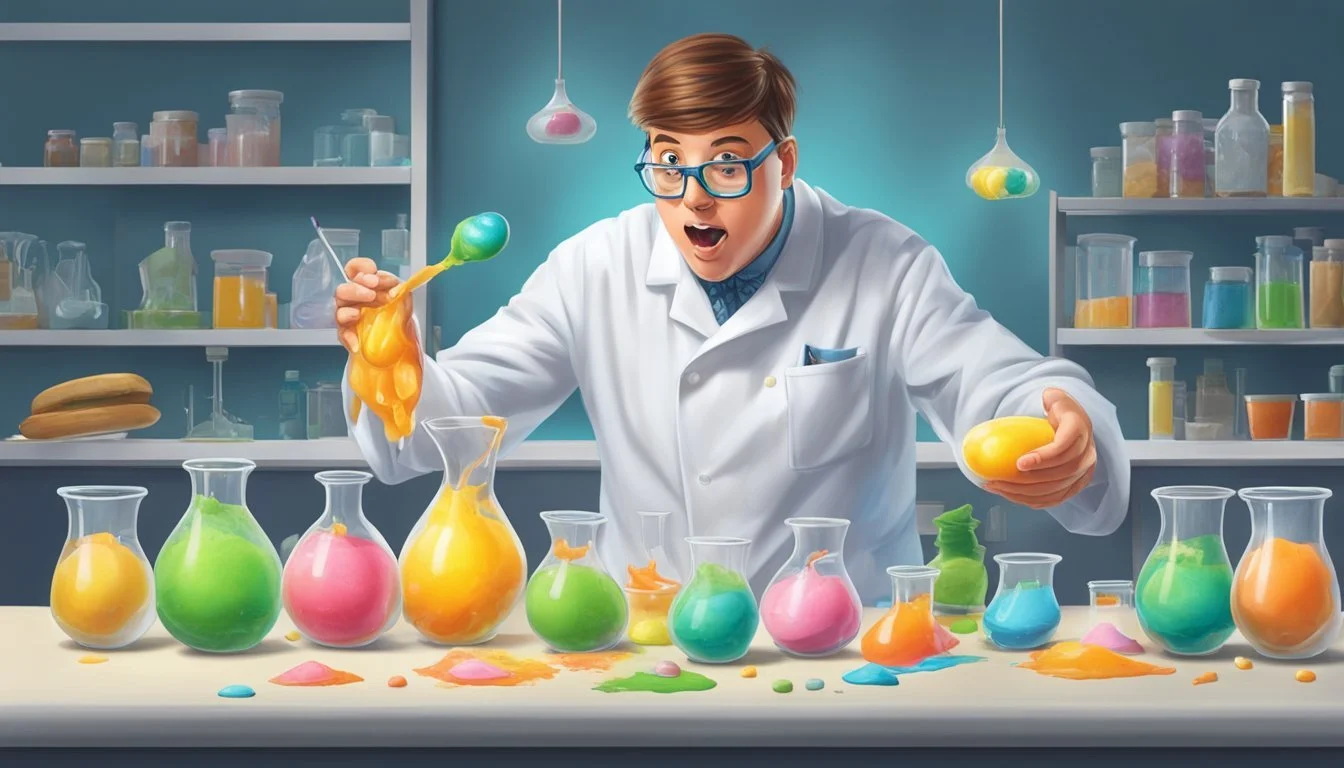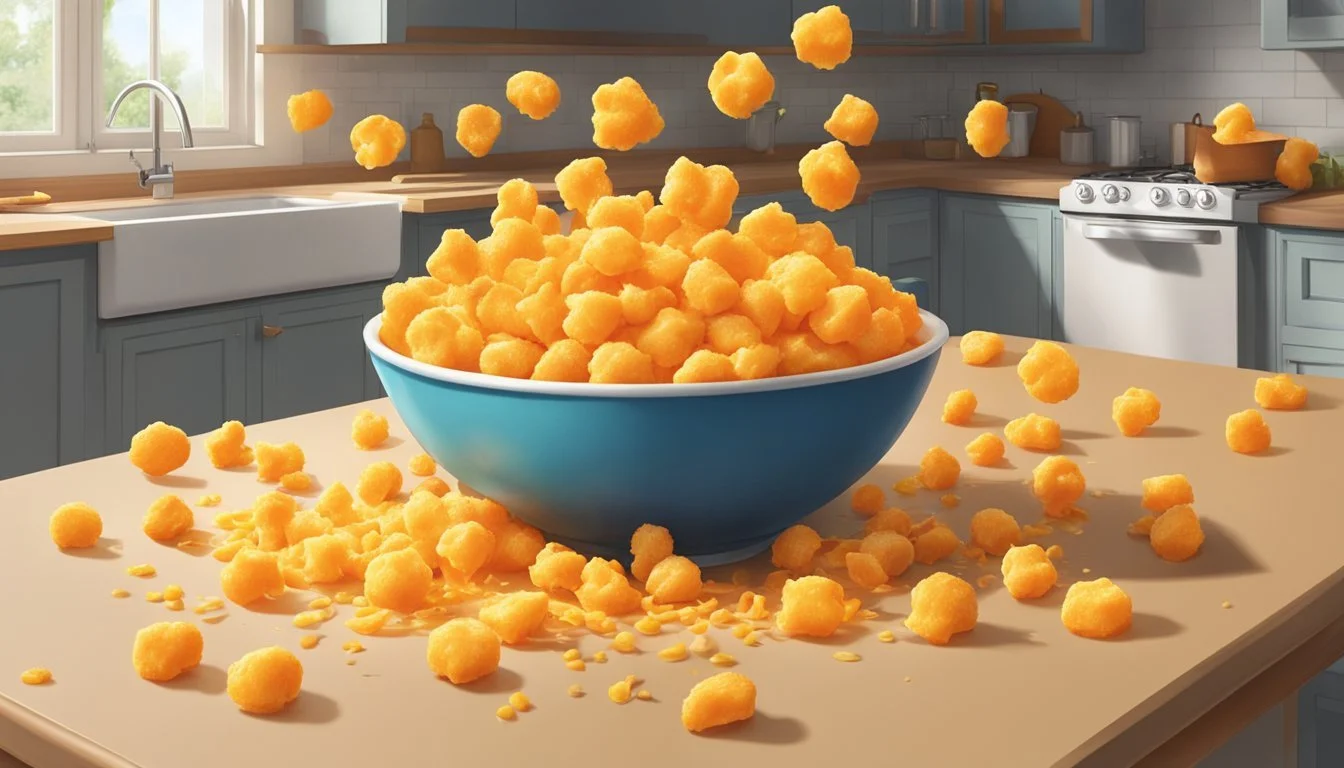10 Foods That Were Invented by Accident
Surprising Culinary Mistakes
Many of the foods we enjoy today owe their existence to accidental discoveries. These serendipitous moments in culinary history have led to the creation of snacks and treats that are now beloved worldwide.
How did these unexpected moments lead to some of the most popular foods we consume today? This article explores ten such foods, revealing the surprising stories behind their invention.
1) Chocolate Chip Cookies
Chocolate chip cookies were born out of a fortunate mistake. In the late 1930s, Ruth Wakefield, who owned the Toll House Inn, intended to make a batch of Butter Drop Do cookies. Lacking baker's chocolate, she substituted it with chopped Nestle semi-sweet chocolate.
The expectation was that these chocolate pieces would melt and blend into the dough. Instead, they retained their shape and created a delightful, crunchy texture.
This unexpected innovation quickly grew in popularity. Nestle saw the potential and struck a deal with Wakefield to print her recipe on their packaging. The rest is history, and chocolate chip cookies became a beloved treat worldwide.
2) Potato Chips
Potato chips are a beloved snack enjoyed by millions around the world. They were created in 1853 by George Crum, a chef at Moon's Lake House in Saratoga Springs, New York.
One evening, a picky customer repeatedly sent back Crum's fried potatoes, complaining they were too thick and soggy. Frustrated, Crum sliced the potatoes extremely thin, fried them until they were crisp, and added a generous amount of salt. To his surprise, the customer loved them.
This unexpected success led to the potato chips becoming a popular item at the restaurant. Eventually, they gained widespread popularity across the United States and beyond.
Today, potato chips come in various flavors and styles, but their accidental origin remains a fascinating story in the world of culinary history.
3) Popsicles
Popsicles were invented by an 11-year-old boy named Frank Epperson in 1905. One cold night in San Francisco, Epperson accidentally left a mixture of powdered soda, water, and a stirring stick outside. By morning, the mixture had frozen solid.
Epperson initially called this treat "Epsicle." His children later convinced him to rename it "Popsicle." The name stuck, and the treat became a hit.
In 1924, he secured a patent for his frozen confection. Two years after securing the patent, Epperson sold the Popsicle brand to the Joe Lowe Company. This move helped bring the frozen treat to a wider audience. Epperson's simple mistake turned into a beloved icy snack enjoyed by millions today.
4) Corn Flakes
Corn Flakes, a staple of many breakfast tables, have an interesting origin story that dates back to the late 1800s. They were created by Dr. John Harvey Kellogg, along with his brother William Keith Kellogg and wife Ella Ervilla Eaton.
The Kellogg brothers were operating a health resort in Michigan. They were advocates of healthy living and sought to develop nutritious food options for their guests.
One day, in a fortuitous accident, a batch of wheat dough was left out and became stale. Rather than discard it, they decided to process the dough by rolling it flat and baking it.
To their surprise, the outcome was crispy, flaky bits that were both crunchy and light. These flakes could be consumed easily with milk, creating a simple, bland breakfast option aimed at promoting better digestion and overall health.
The accidental invention soon became popular, and the Kelloggs started to produce and sell Corn Flakes commercially. This simple mistake led to the creation of one of the most popular breakfast cereals in history. The innovation not only shaped breakfast habits but also marked the beginning of the Kellogg's brand.
5) Ice Cream Cones
Ice cream cones were not initially designed as the perfect vessel for carrying ice cream. Italo Marchiony crafted the first ice cream cone in New York City in 1896. He received a patent for his innovation in December 1903.
A year later, at the 1904 World's Fair in St. Louis, another twist on the ice cream cone emerged. Ernest A. Hamwi, a Syrian immigrant, was improvising. He rolled a waffle to hold ice cream when a vendor ran out of dishes.
These innovations marked the birth of the ice cream cone as we know it today. Marchiony and Hamwi both contributed to its popularity. Serving ice cream on a cone quickly became a convenient and beloved tradition.
6) Champagne
Champagne, the sparkling wine from the Champagne region of France, was born out of serendipity. During the winemaking process, there was an unintended secondary fermentation that trapped carbon dioxide, giving the wine its signature bubbles.
A French Benedictine monk, Dom Pérignon, is often associated with champagne. Contrary to popular belief, Pérignon tried to eliminate the bubbles in his wines, as they were considered a flaw.
Despite his efforts, the bubbly wine gained popularity. The unique effervescence created a sensation and became a symbol of celebration and luxury. Over time, the accidental discovery was embraced, and winemakers refined the process to produce consistent sparkling wine.
Champagne's development marked a significant milestone in winemaking, highlighting how an unexpected result can pave the way for one of the world's most cherished beverages.
7) Silly Putty
Silly Putty originated during World War II. Engineer James Wright was working at General Electric's laboratory in Connecticut. His goal was to create a substitute for synthetic rubber. One day, he accidentally mixed boric acid with silicone oil.
The result was a stretchy, bouncy material. This new substance had characteristics unlike any other rubber. Despite its unique properties, it wasn't suitable as a rubber substitute.
However, Silly Putty found an entirely different use. In 1950, it was marketed as a toy. Ruth Fallgatter, owner of a toy store, and Peter Hodgson, a marketing consultant, recognized its potential. They decided to package it in plastic eggs and called it Silly Putty.
This simple toy quickly became popular. It could stretch, bounce, and even lift images from newspapers.
Since its accidental invention, Silly Putty has been used in various ways. It's not only a children's toy but also a tool in physical therapy and even for stress relief.
Thus, from its origins in a lab, Silly Putty continues to be a beloved and versatile product.
8) Coca-Cola
Coca-Cola, one of the world's most iconic beverages, was invented by accident in 1886. Dr. John Stith Pemberton, a pharmacist in Georgia, was originally looking to create a cure for common ailments like headaches and indigestion.
In his efforts, he concocted a syrup made from coca leaves and kola nuts. The resulting mixture had a distinctive flavor but initially lacked widespread appeal.
The turning point came when Pemberton's assistant accidentally mixed the syrup with carbonated water instead of plain water. This unexpected combination created a refreshing, fizzy drink that quickly gained popularity.
Pemberton decided to market this new creation as a fountain drink rather than a medicinal product. He partnered with businessman Frank M. Robinson, who suggested the name "Coca-Cola."
Robinson also designed the iconic script logo that remains in use today. They began selling Coca-Cola at soda fountains, and its popularity soared.
Dr. Pemberton, however, did not live to see the widespread success of his invention. Despite this, Coca-Cola went on to become a global phenomenon and remains one of the best-selling soft drinks around the world.
9) Worcestershire Sauce
Worcestershire sauce was created by accident in Worcester, England, during 1835. The initial recipe came from John Lea and William Perrins, local chemists. Lord Sandys, recently returned from India, asked them to recreate a sauce he enjoyed there.
The first batch of Worcestershire sauce was deemed unpalatable. Lea and Perrins discarded it and thought no more about it.
Some months later, they rediscovered the stored barrels. To their surprise, fermentation had transformed the mixture. It had developed a unique and delicious flavor.
By 1843, the duo was selling around 15,000 bottles per year. By 1849, it was being shipped internationally, reaching destinations as far as San Francisco.
10) Cheese Puffs
Cheese puffs, a popular snack, were born out of an unexpected industrial process. In the 1930s, an animal feed manufacturer named Flakall Company stumbled upon this creation.
An employee noticed that moistened corn kernels, when forced through a machine, puffed up upon exiting. These puffs, originally intended as feed, turned out to be quite tasty.
Recognizing the potential, the company seasoned these corn puffs with cheese to enhance their flavor. This accidental snack quickly gained popularity.
Cheetos, introduced in 1948, became the most iconic brand of cheese puffs in the United States. They are known for their distinctive crunch and cheesy coating, securing their place in snack history.
Historical Origins
Many beloved foods around the world owe their existence to unexpected accidents and the fortunate role that serendipity played in their creation. These stories highlight the significant impact of chance on culinary history.
Unexpected Discoveries
In 1930, Ruth Wakefield, co-owner of the Toll House Inn in Massachusetts, created the first chocolate chip cookie when she substituted baker’s chocolate with broken pieces of a chocolate bar. The chunks didn’t melt as expected, but the result was delicious.
Potato chips originated in 1853 when Chef George Crum, frustrated by a customer's repeated complaints about thick fries, sliced potatoes extra thin and fried them. The customer loved the crispy outcome, making potato chips a staple snack.
Slurpees were born in the late 1950s when Dairy Queen owner Omar Knedlik’s soda machine broke down. He stored soda in a freezer, and the result was a slushy beverage that quickly gained popularity.
The Role of Serendipity
Waffle cones were an accidental creation at the 1904 St. Louis World’s Fair. A vendor, out of dishes to serve ice cream, partnered with a nearby waffle vendor. They rolled waffles into cones to hold the ice cream, creating a timeless treat.
Corn Flakes were invented by the Kellogg brothers in the 19th century while searching for a bread substitute suitable for their vegetarian clientele. They accidentally discovered the flaking process when they left cooked wheat out overnight.
Chance encounters in the kitchen often led to revolutionary changes in eating habits. The unexpected nature of these discoveries underlines the importance of flexibility and creativity in culinary innovation.
Scientific Insights
Accidental food inventions often stem from unexpected chemical reactions or unplanned experimentation in food science, revealing intriguing phenomena.
Chemical Reactions
Many food inventions originate from chemical reactions. Corn flakes, for example, were created when wheat, after being accidentally left out, turned into flakes upon rolling.
Potato chips emerged when slicing potatoes thinly and frying them caused them to crisp in an unexpected way. Chef George Crum's quest to address a customer complaint led to this iconic snack.
Chemical interactions often transform simple ingredients into new products. Worcestershire sauce became a household staple after ingredients mixed and fermented differently than intended.
Experimentation in Food Science
Experimentation plays a key role in accidental food innovations. The Kellogg brothers sought a bread alternative and ended up with corn flakes.
Unexpected results of altered methods or ingredient substitutions lead to many beloved foods. Omar Knedlik’s use of a freezer for sodas established the basis for the Icee.
In food science, trial and error often leads to breakthroughs. Dried grapes discovered in 2000 BC eventually turned into raisins, a widely-traded commodity and perceived medicine. This showcases how experimentation often yields unanticipated yet valuable results.






